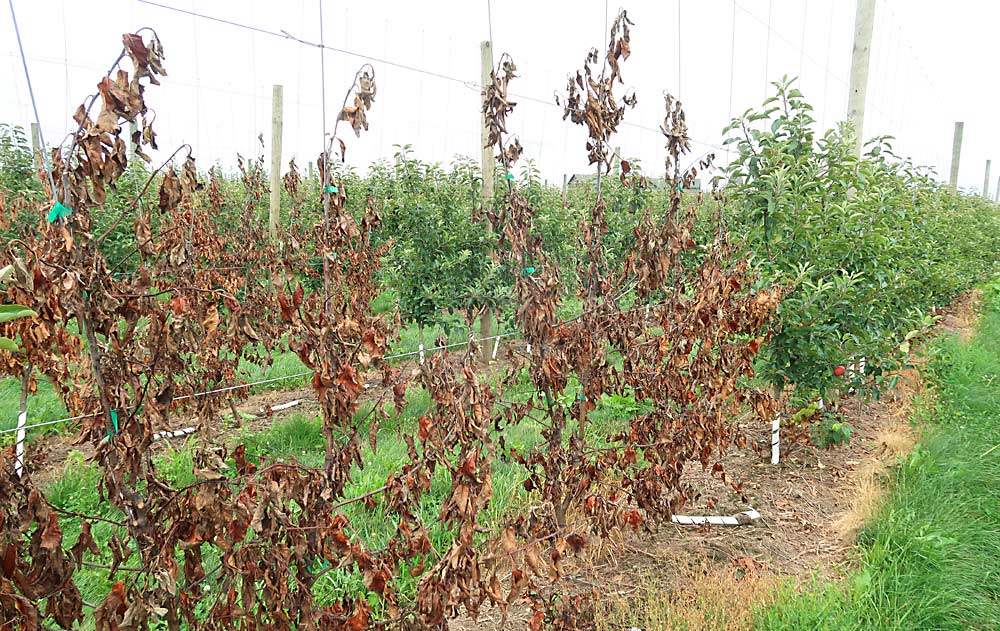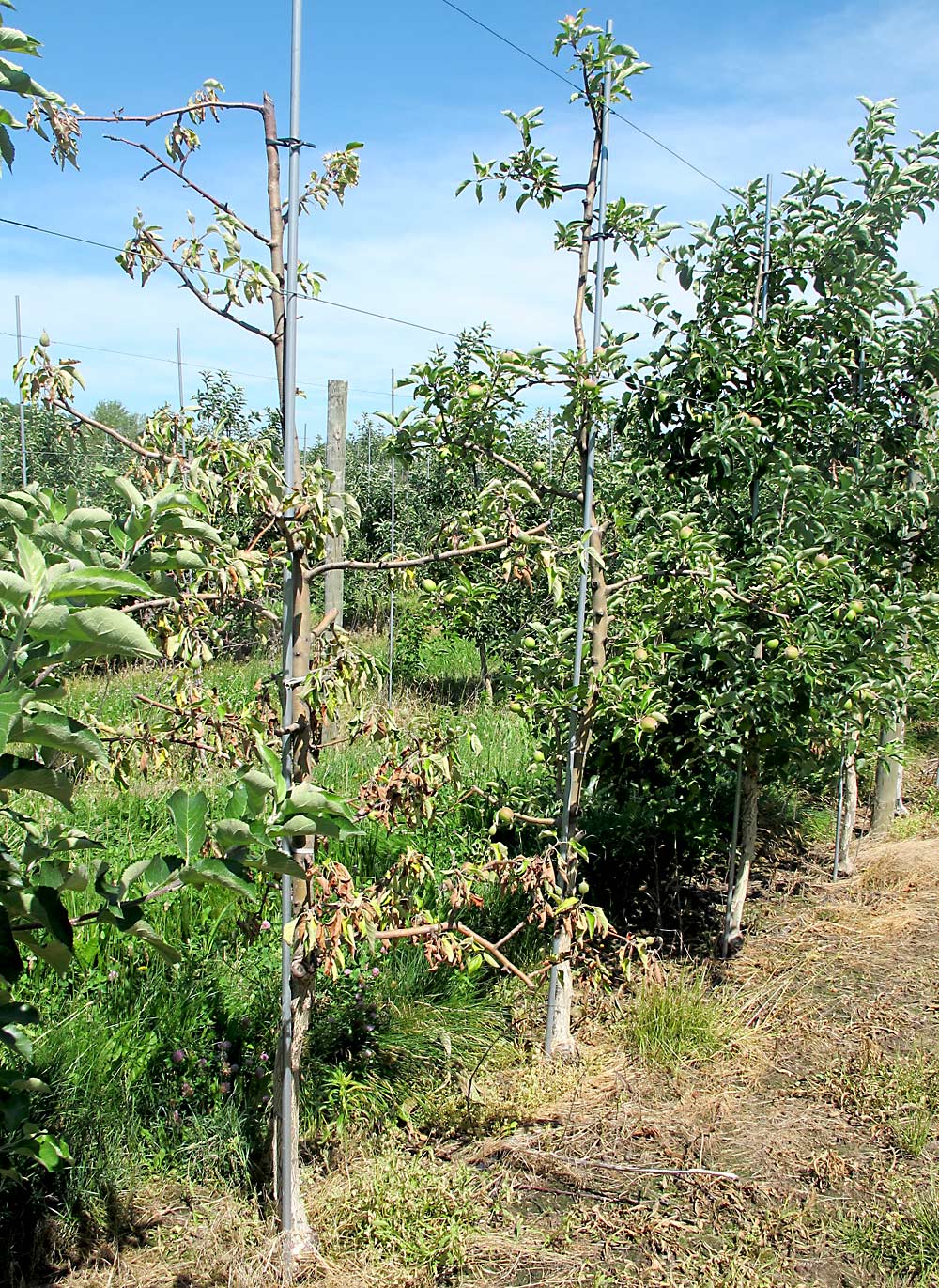
Fire blight in Northern Michigan went from minor nuisance to major problem in the blink of an eye.
In the summer of 2019, growers on the Old Mission Peninsula, north of Traverse City, said fire blight wasn’t that big of a deal there, according to Michigan State University’s Nikki Rothwell, coordinator of the Northwest Michigan Horticulture Research Center. “Then in 2020 and in 2021, it has become a huge problem,” she said.
Several factors have contributed to the growing problem in the region, including vulnerable varieties, such as Gala and the newer variety EverCrisp, which many Michigan growers have begun planting. Also, changing weather patterns are bringing warmer springs that are ideal for fire blight.
MSU’s Enviroweather monitoring tool bears that out. When growing degree-hour accumulations reach an epiphytic infection potential of 100, the chart uses a red indicator. Northwest Michigan spring charts in the past would show “a little bit of red here and there,” she said, “but now in some springs, you’ll pull those charts up and the whole thing will be red. That’s terrifying for any apple grower.”
When the added warmth combines with a wet spring, blossom blight can quickly advance to shoot blight.
“That’s what happened in 2020. We’d seen tons of moisture in early spring, so the shoots were growing really vigorously and were very tender. Then we had enough winds to shake up the leaves and cause little fissures or tears in the leaves, and that’s when we got shoot blight,” she said.
Blossom blight can set the stage for shoot blight, but shoot blight can occur even if blossom blight doesn’t, according to fire blight expert and MSU professor George Sundin. Either way, shoot blight infection that occurs in late May can continue throughout June, “and that can be really bad, because while the disease is spreading between trees, the pathogen is also growing and spreading inside the tree, and that’s where it can lead to tree death,” he said.

Northwest Michigan isn’t the only region beginning to see fire blight creep into its orchards. Rothwell reported that growers in northern Ontario and Nova Scotia are now experiencing problems with the pathogen, while Sundin is hearing the same from more and more growers in Wisconsin and Minnesota.
“The overall general trend is of conditions getting warmer on average, and that really contributes to fire blight,” Sundin said.
Highly fertilized, high-density growing systems are also making young trees more vulnerable to fire blight.
“The growers want the trees to grow fast when they’re young — they want to reach the top wire in the trellis by year two, potentially, but the latest by year three — so the trees are more vigorous,” Sundin said. “This pathogen really prefers vigorous growth for infection, so the faster the trees are growing and the more vigorous they are, the more susceptible they are to fire blight.”
Fire blight is coming
That combination of higher temperatures, modern growing systems and susceptible varieties primed Northwest Michigan farms for the fire blight outbreak that many growers experienced in 2020 and even more saw in 2021.
“Growers were not used to dealing with fire blight, so maybe it caught a few people by surprise,” Sundin said. “And if it does catch you by surprise, it can be really devastating.”
To prevent that from happening at other orchards, Sundin urged growers to remain on guard. For Michigan growers, that means monitoring the fire blight model on Enviroweather and, when conditions dictate, spraying preventatively. He recommends the dual treatment of Apogee (prohexadione calcium) plus Actigard (acibenzolar-S-methyl). Apogee creates a physical barrier against infection, and Actigard helps the tree fight a fire blight infection.
Trials at the research orchard in Traverse City in 2021 used an initial application of 2 ounces of Apogee to 1 ounce of Actigard at king bloom petal fall, followed by reapplication at two, four and six weeks. The treatment kept trees free of fire blight, even when neighboring, untreated trees “were just hammered,” Rothwell said.
Growers should be prepared to take this preventive approach in 2022, and beyond, and follow up by pruning out cankers on any infected trees or removing them altogether.
“Fire blight has always been somewhat of an issue on some varieties and in some years, but now I feel like it’s something we’ll be dealing with every year,” she said.
Sundin agreed.
“I just want people to keep fire blight in their minds, because it can spread so fast,” he said. “This is something that they will have to actively work to control.”
—by Leslie Mertz






Leave A Comment